
Operation Sea Lion, also written as Operation Sealion, was Nazi Germany's code name for their planned invasion of the United Kingdom. It was to have taken place during the Battle of Britain, nine months after the start of the Second World War. Following the Battle of France and that country's capitulation, Adolf Hitler, the German Führer and Supreme Commander of the Armed Forces, hoped the British government would accept his offer to end the war. He considered invasion a last resort, to be used only if all other options had failed.

A fire ship, or fireship, used in the days of wooden rowed or sailing ships, was a ship, filled with gunpowder or other combustibles, deliberately set on fire and steered into an enemy fleet, in order to destroy ships, or to create panic and make the enemy break formation. Ships used as fire ships were either warships whose munitions were fully spent in battle, surplus ones which were old and worn out, or inexpensive purpose-built vessels rigged to be set afire, steered toward targets, and abandoned quickly by the crew.
The Battles of Narvik were fought from 9 April to 8 June 1940, as a naval battle in the Ofotfjord and as a land battle in the mountains surrounding the north Norwegian town of Narvik, as part of the Norwegian Campaign of the Second World War.
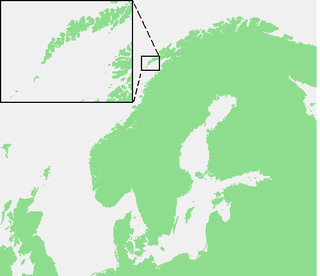
Operation Anklet was the codename given to a British Commando raid during the Second World War. The raid on the Lofoten Islands was carried out in December 1941, by 300 men from No. 12 Commando and the Norwegian Independent Company 1. The landing party was supported by 22 ships from three navies.

The British Pacific Fleet (BPF) was a Royal Navy formation that saw action against Japan during the Second World War. It was formed from aircraft carriers, other surface warships, submarines and supply vessels of the RN and British Commonwealth navies in November 1944 to fight under the overall command of the US Navy.

Operation Pedestal, known in Malta as Il-Konvoj ta' Santa Marija, was a British operation to carry supplies to the island of Malta in August 1942, during the Second World War.
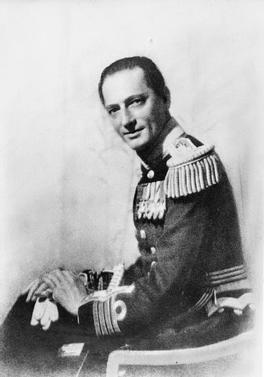
Augustus Willington Shelton Agar, was a Royal Navy officer in both the First and the Second World Wars. He was a recipient of the Victoria Cross, the highest award for gallantry in the face of the enemy that can be awarded to British and Commonwealth forces, for sinking a Soviet cruiser during the Russian Civil War.

SS Ohio was an oil tanker built for The Texas Company. The ship was launched on 20 April 1940 at the Sun Shipbuilding & Drydock Co. in Chester, Pennsylvania. The United Kingdom requisitioned it to re-supply the island fortress of Malta during the Second World War.

The Malta convoys were Allied supply convoys of the Second World War. The convoys took place during the Siege of Malta in the Mediterranean Theatre. Malta was a base from which British sea and air forces could attack ships carrying supplies from Europe to Italian Libya. Britain fought the Western Desert Campaign against Axis armies in North Africa to keep the Suez Canal and to control Middle Eastern oil. The strategic value of Malta was so great the British risked many merchant vessels and warships to supply the island and the Axis made determined efforts to neutralise the island as an offensive base.
Operation Python, a follow-up to Operation Trident, was the code name of a naval attack launched on West Pakistan's port city of Karachi by the Indian Navy during the Indo-Pakistani War of 1971. After the first attack during Operation Trident on the Port of Karachi, Pakistan stepped up aerial surveillance of its coast as the presence of large Indian Navy ships gave the impression that another attack was being planned. Pakistani warships attempted to outsmart the Indian Navy by mingling with merchant shipping. To counter these moves, Operation Python was launched on the night of 8/9 December 1971. A strike group consisting of one missile boat and two frigates attacked the group of ships off the coast of Karachi. While India suffered no losses, Pakistani fleet tanker PNS Dacca was damaged beyond repair, and the Kemari Oil Storage facility was lost. Two other foreign ships stationed in Karachi were also sunk during the attack.
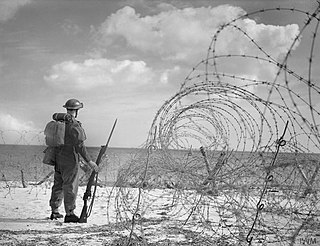
British anti-invasion preparations of the Second World War entailed a large-scale division of military and civilian mobilisation in response to the threat of invasion by German armed forces in 1940 and 1941. The British Army needed to recover from the defeat of the British Expeditionary Force in France, and 1.5 million men were enrolled as part-time soldiers in the Home Guard. The rapid construction of field fortifications transformed much of the United Kingdom, especially southern England, into a prepared battlefield. Sea Lion was never taken beyond the preliminary assembly of forces. Today, little remains of Britain's anti-invasion preparations, although reinforced concrete structures such as pillboxes and anti-tank cubes can still be commonly found, particularly in the coastal counties.

HMS Wild Swan was an Admiralty modified W-class destroyer built for the Royal Navy. She was one of four destroyers ordered in 1918 from Swan Hunter and Wigham Richardson, Wallsend-on-Tyne under the 14th Order for Destroyers of the Emergency War Program of 1917–18. She was the second Royal Navy ship to carry the name, after the sloop HMS Wild Swan in 1876. Like her sisters, she was completed too late to see action in the First World War.
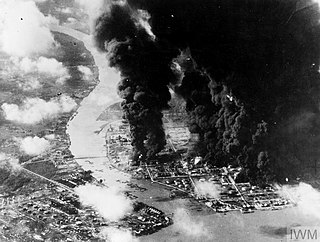
Operation Meridian, also known as the "Palembang Raids" was part of a series of British air attacks directed at Japanese-held oil refineries near Palembang on Sumatra during the Second World War, Meridian had two phases: Meridian I on 24 January 1945 and Meridian II on 29 January. As a result, the critical aviation fuel output of the plants at Palembang was reduced by seventy-five percent.

The Dale class were a class of replenishment oilers taken up for service with the Royal Fleet Auxiliary, supporting the Royal Navy during the inter-war period. They went on to see action during the Second World War and supported British and allied fleet units in Cold War conflicts such as the Korean War.

The third HMS Windsor (D42) was a W-class destroyer of the British Royal Navy that saw service in the final months of World War I and in World War II.

RFA Tidesurge is a Tide-class replenishment tanker of the British Royal Fleet Auxiliary (RFA). Built by DSME in 2017, she entered service with the RFA on 20 February 2019.

Operation Stab was a British naval deception during the Second World War to distract Japanese units for the upcoming Guadalcanal campaign by US forces.

Operation Pilgrim was a planned British operation to invade and occupy the Canary Islands during World War II. The invasion was a contingency plan to be executed in the event of a known plan whereby Germany would support Spain in occupying Gibraltar, the Azores, the Canary Islands as well as the Cape Verde Islands. The British feared that such occupation would materially affect Allied access to the Mediterranean and endanger Britain’s shipping-lanes to its Dominions. Operation Pilgrim was a preemptive invasion and occupation to prevent German control of the islands. The German invasion never materialised and consequently, Operation Pilgrim was never put into action.
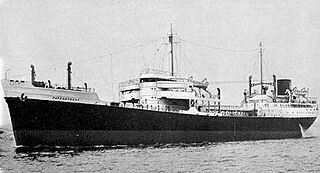
Lothringen was an oil tanker ordered for Dutch shipowner Phs. Van Ommeren under the name Papendrecht in Rotterdam. On 16 May 1940, the Kriegsmarine seized her when the ship was still under construction and she was renamed Lothringen. She was commissioned on 23 January 1941. The ship became the property of Erste Deutsche Walfang-Gesellschaft of Hamburg who converted her into a support ship for naval operations by the German battleship Bismarck and cruiser Prinz Eugen in the Atlantic. On 15 June 1941, Lothringen was captured by the British light cruiser HMS Dunedin and taken into service of the Admiralty, crewed by the Royal Fleet Auxiliary. It was renamed Empire Salvage in 1941 and served the Allies for the remainder of the war. After the war, it was handed back to its owners.
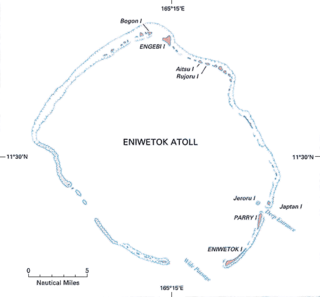
Naval Base Eniwetok was a major United States Navy base located at Enewetak Atoll in the Marshall Islands, during World War II. The base was built to support the island-hopping strategy used by allied nations fighting the Empire of Japan in the Pacific War. During 1944-5 Eniwetok was one of the busiest naval bases in the world with over 488 ships.


















